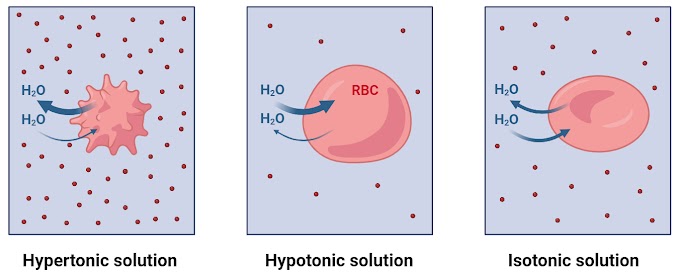Define Fever or Pyrexia
Fever, also known as pyrexia, is a temporary increase in body temperature, often due to an underlying condition such as an infection. It is a common medical sign that signals the body is responding to an illness or inflammation.
Normal body temperature is typically around 98.6°F (37°C) but may vary slightly among individuals. A fever is generally defined as a body temperature above 100.4°F (38°C).
Common causes of fever include infections caused by bacteria, viruses, fungi, or parasites. It can also result from inflammatory conditions such as autoimmune diseases, heat exhaustion, or heatstroke. Other triggers include drug-induced fever from certain medications, side effects of vaccinations, or underlying medical conditions such as cancer or hormonal imbalances.
Why Do We Get Chills When We Have Fever?
Chills are a common symptom that often accompany fever, characterized by a sensation of coldness and involuntary muscle contractions (shivering). This phenomenon occurs due to the body's effort to regulate its internal temperature during an immune response to infection or other stimuli.
Let’s look into the underlying mechanisms involved in the body’s defense strategies and physiological processes.
1. The Role of the Hypothalamus
The hypothalamus, located in the brain, acts as the body’s thermostat, maintaining a stable internal temperature (homeostasis). Normally, the body temperature hovers around 98.6°F (37°C), but during an infection or other triggers, the set point of the hypothalamus increases.
Triggering factors include the release of pyrogens, such as cytokines and prostaglandins, by immune cells in response to pathogens like bacteria or viruses. These pyrogens signal the hypothalamus in the brain to raise the body’s temperature set point. This elevated temperature acts as part of the immune response, creating an environment less favorable for the growth and survival of the invading pathogens.
2. Perceived Coldness and Chills
Once the hypothalamus increases the body’s temperature set point, your body interprets the current temperature as "too low." This perceived discrepancy between the actual body temperature and the new set point results in chills.
The physiological response includes vasoconstriction, where blood vessels in the skin constrict to conserve heat. This reduces blood flow to the skin, causing it to feel cold. Additionally, muscle contractions, or shivering, occur as the body’s way of generating heat through increased metabolic activity, helping to raise the body temperature to the new set point.
3. Shivering Mechanism
Shivering is the body’s primary way to produce heat during chills. It involves rapid, involuntary contractions and relaxations of skeletal muscles.
Purpose of shivering is to converts chemical energy from food into heat energy and helps the body match its temperature to the newly elevated set point.
4. Resolution of Chills
As the body generates enough heat to reach the new hypothalamic set point, the chills and shivering typically subside. At this point, the individual may feel warm or hot as the fever stabilizes. When the fever "breaks" (the hypothalamus resets the temperature back to normal), the body actively works to cool itself down by sweating and dilating blood vessels (vasodilation).
5. Chills Without Fever
While chills are often associated with fever, they can also occur independently in conditions such as:
- Exposure to cold environments
- Malaria or other parasitic infections
- Hormonal fluctuations (e.g., menopause-related hot flashes)
- Intense emotional reactions or fear
6. Clinical Implications
Chills, when associated with fever, are a sign of the body’s natural defense mechanisms. However, persistent or severe chills could indicate a more serious condition and warrant medical attention.
Summary
Chills during a fever are the result of the body’s response to a higher hypothalamic set point, driven by the release of pyrogens during an immune challenge. Shivering helps raise body temperature to the new set point, aiding in the fight against infections. While chills are typically harmless, they signal the need to monitor the underlying cause of the fever and ensure proper treatment.
Some Questions and Answers
1. Why do we feel cold when we have a fever?
A. The hypothalamus raises the body’s temperature set point, making the current body temperature feel too low. This creates a sensation of coldness, leading to chills.
2. What causes chills during a fever?
A. Chills are caused by muscle contractions (shivering) and reduced blood flow to the skin (vasoconstriction) as the body tries to generate heat to match the new temperature set point.
3. Is shivering during a fever normal?
A. Yes, shivering is the body’s way of producing heat to increase the internal temperature to the fever's set point.
4. Can you have chills without a fever?
A. Yes, chills can occur without fever in cases like cold weather exposure, intense emotions, or specific medical conditions such as hypoglycemia or infections.
5. What happens when the fever "breaks"?
A. The hypothalamus resets the body’s set point to normal, and the body cools down through sweating and vasodilation.
6. Should chills during a fever be treated?
A. Chills themselves don't need treatment, but managing the fever with hydration and fever-reducing medications, if advised by a doctor, can help.
7. What is the role of pyrogens in chills and fever?
A. Pyrogens are substances that signal the hypothalamus to raise the body’s set point, triggering the physiological responses leading to chills and fever.






0 Comments